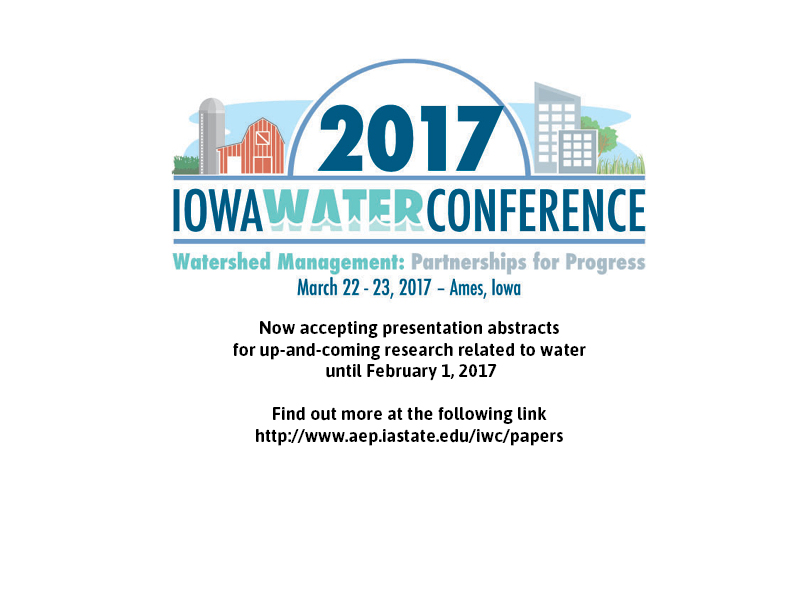Post submitted by Melissa Miller, Associate Director of the Iowa Water Center
At a recent Iowa Watershed Approach meeting, I introduced myself (half-jokingly) as the president of the Watershed Management Authority Fan Club. As evidenced by my post last fall after a trip to the Cedar River Watershed Coalition meeting, I am a strong supporter of a watershed approach to natural resource management. Naturally, Watershed Management Authorities (WMAs) are a recipient of my affection.
A brief overview for those not familiar with WMAs: Watershed Management Authorities are a state of Iowa-recognized mechanism for encouraging the collaboration of the different communities within a watershed and enacting watershed based planning, including adoption of conservation practices that mitigate flooding and improve water quality. WMAs were first introduced in Iowa in 2010 when Iowa code 466B was enacted. Major initiatives of this chapter include the formation of the Watershed Resources Coordinating Council (WRCC), Watershed Planning Action Committee (WPAC), the Water Quality Initiative (WQI), and WMAs. There are currently 17 WMAs in the state, with at least five more on deck for formation.
At a statewide WMA meeting on February 7, 2017, representatives from those WMAs gathered in Dubuque, Iowa to give updates and to talk strategy, successes, and collaboration. Mary Beth Stevenson with the Iowa Department of Natural Resources (IDNR) kicked off the afternoon with some fun facts about WMAs, including:
- 17 WMAs have received funding for planning or implementation through IDNR, Iowa Department of Ag and Land Stewardship, or the Iowa Watersheds Project or the Iowa Watershed Approach (two rounds of grant funding from the U.S. Dept. of Housing and Urban Development)
- 15 WMAs currently have funding at some level
- 10 WMAs are funded at a level with enough money for full-time staff and implementation
- 12 WMAs have or will have some level of paid staff, even if just part-time, funded locally and/or through grant funds
This is a promising start for WMAs as a successful vehicle for watershed management. Even more promising were the updates from the WMAs. Everyone had something to report from across the state. Indian Creek, one of the original six WMAs in 2012, is looking to hire a coordinator and completed an annual review that is turning into a strategic plan. Turkey River WMA, one of the “original HUD” projects succeeded in influencing policy in all participating political subdivisions (and achieved a 5% flood reduction in Otter Creek with the construction of 29 well-placed structures). In the Walnut Creek WMA a soil and water conservation district staff member found a lamprey (nearly extinct) in a CREP wetland. The Maquoketa River is also in the process of forming a WMA, not because they have outside funding, but simply because they have a group of interested citizens that recognize the benefits of working together.
These are just a few updates of many. My pen could hardly keep up and I couldn’t keep from asking questions. It is extremely energizing to be in a room full of people sharing ideas, concerns and solutions, and I wanted to learn all that I could. After the updates, Polk County WMA Coordinator John Swanson presented the unique activities happening in his part of the state (we will feature that presentation in its own post in the near future). We finished by breaking out into small groups to talk about how to keep WMA momentum going, establishing a WMA coordinator/staff position, watershed plan development and assessment, and how to structure a WMA collaborative group that communicates regularly to move all WMAs forward.
Citizen engagement is critical to the success of watershed management. I will leave you today with a challenge: find the WMA nearest you, even if you don’t live in that watershed, and attend a quarterly meeting. After you attend, you may just want to join my Watershed Management Authority Fan Club.




